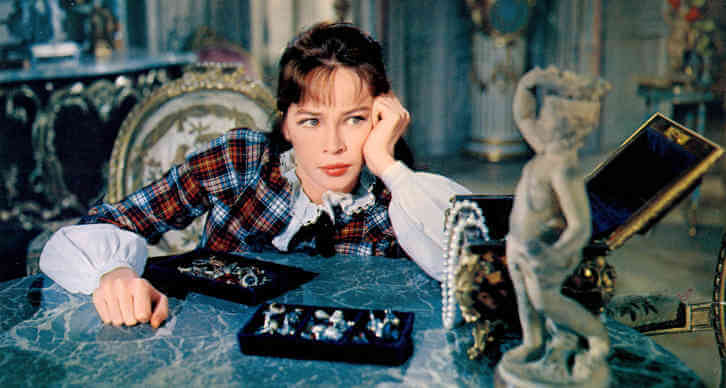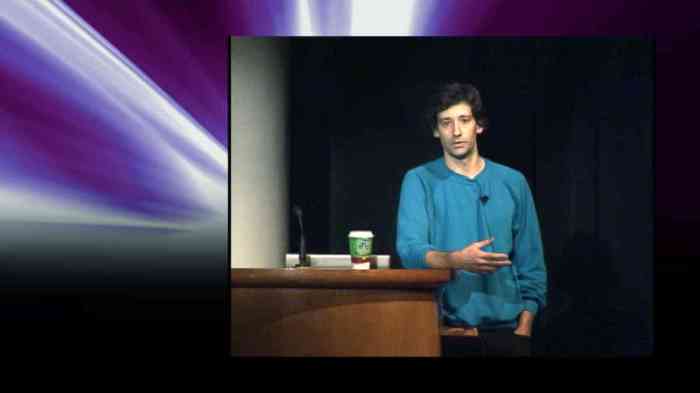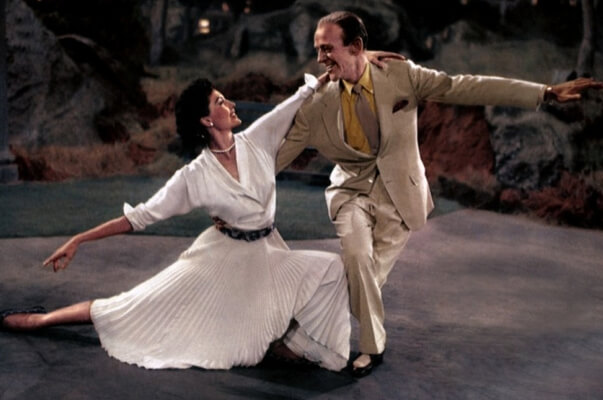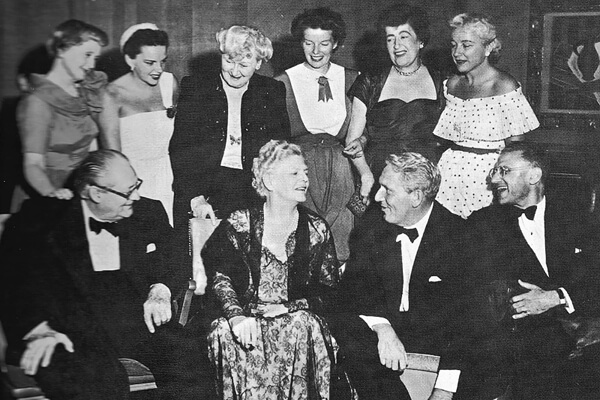Lerner and Loewe’s “My Fair Lady,” possibly the greatest Broadway musical, sucked as a film. There I said it. Beyond the notoriety of Audrey Hepburn’s voice being dubbed in the lead role of Cockney flower girl Eliza Doolittle — when she could have sung the entire score charmingly — by the proficiently bland-sounding go-to movie ghost singer, Marni Nixon, the whole project suffers from an over-reverence to the smash hit show, for which producer Jack Warner paid a unprecedented $5 million. Stagy in the extreme and entirely filmed on the Warner Brothers lot, the wonderful music and lavish Cecil Beaton its real entertainment value.
The other performances — Stanley Holloway as Alfred Doolittle, Wilfred Hyde-White as linguist Colonel Pickering, and, especially, Rex Harrison’s overdone, charmless, and stale recreation of his stage role as Professor Henry Higgins — are over-drawn and cartoonish, direly lacking in true spontaneity and humanity.
But the failing of this three-hour film must be ultimately be laid at the feet of its director, George Cukor. A Hollywood legend himself — especially for the magnificent, career-defining performances he’d drawn from his stars (Jean Harlow and Billie Burke in “Dinner at Eight,” Garbo in “Camille,” his muse Katharine Hepburn in “Little Women” and others, Judy Garland in “A Star is Born”) and many canny stage adaptations — he likely seemed the ideal director for “My Fair Lady.”
Unfortunately, Cukor brought a slickly professional, gun-for-hire approach to this sought-after job, creating largely a stodgy filmed record of the play, instead of any true cinematic innovation. When the film swept the 1965 Academy Awards, including an Oscar for Cukor, which had long eluded him since his directorial debut in 1930, the award was bestowed on him for one of his weakest films.
The right man for this job would have been Vincente Minnelli, who — essentially in a tie with Stanley Donen — remains the greatest movie musical director of them all, from his “Cabin in the Sky,” his first full directorial credit, and the landmark “Meet Me in St. Louis to “The Band Wagon” and “Gigi.” A master visual storyteller, Minnelli may not have been all that in directing actors (Debbie Reynolds told me he spent more time arranging hairpins on a living room sofa set piece than guiding her performance), but the cast were all experienced pros, anyway. What he could have done was thrown open the windows of this claustrophobic production, maybe even getting Higgins, Eliza, and Pickering out of their linguistic man cave on Wimpole Street, singing, say, in a stately park or on the Thames. Six years earlier Minnelli had made the beguiling confection that was “Gigi,” which was a sort of test run for “My Fair Lady,” with its Lerner & Loewe score, production design again by Cecil Beaton (with whom Minnelli got along famously, as opposed to Cukor who loathed him — this Clash of Queens creating much on-set discomfort, as recorded in Beaton’s published diaries), and tale of a gauche young miss transformed into a swan by experts in their field to be — not a proper lady, as in “My Fair Lady,” but a proper courtesan.
Indeed, both Alan Lerner and Jack Warner originally felt Minnelli should direct the film. Unfortunately, Minnelli, on the bad advice of his agent, demanded too much money and the final cut, mistakenly thinking that no one else could fill his shoes. It was then that Warner turned to Cukor, who had already directed the Garland comeback “A Star is Born.”
So, sadly, “My Fair Lady” is not among the selections this month at the inviting cinephile palace the Metrograph in its festival “Minnelli Widescreen” (August 16-22). The focus here is the director’s flamboyantly canny use of the Cinemascope process with its envelope-shaped screen, shot in the-then novel screen ratio of 2.35:1 (which most other directors loathed and television showings butchered, lopping off both ends to make a proper boob tube square). For Minnelli, a skilled designer and painter, who’d begun doing stage shows at Radio City Music Hall, this was like a new and thrilling elongated canvas. Boy, how he filled it!
These films provide perfect, eye-pleasing end-of-studio era/ end-of-summer entertainment, ideal for a special date or memorable shared experience with dear friends. The exquisite “Gigi” (1958; August 16) is being screened and, for all the enthusiasm over the charm of Leslie Caron, Maurice Chevalier, and Hermione Gingold, Isabel Jeans as the heroine’s beyond-worldly courtesan aunt delivers the best performance, the height of elegance, sophisticated wit, and the most elevated state of camp, as she instructs her hopeless goof of a niece in essential matters like how to properly eat ortolans, select a gent’s cigar, and, most hilariously, differentiate the gemstones essential to success in their chosen career. (“A topaz? Among my jewels? You must be mad!”

Minnelli, who many reckon to be gay, if not, at least, one of the most effeminate men in Hollywood, directed the screen adaptation of a seminal work in the proto-gay canon, Robert Anderson’s “Tea and Sympathy (1956; August 17), about a sensitive, non-macho private school student (John Kerr), who is accused of homosexuality by bullying classmates and teachers but finds solace in a friendship with the quietly supportive wife of the school’s alpha coach. Anything gay in 1953, when the play opened on Broadway for a successful run of more than 700 performances, was strictly taboo, so the play was an eye-opener, and when it was sold, its homosexual theme, like that of Tennessee Williams’ “Cat on a Hot Tin Roof,” was never mentioned directly. The all-purpose “different” was used, instead.
Playwright Anderson, married twice (for two decades to actress Teresa Wright) seems to have been straight, and while the work makes a sincere plea for understanding and acceptance of the difference in others, it also has its nerve-wracking side, like the wife’s determination to disprove the accusations by having sex with the boy, a minor (as all kinds of 2019 alarm bells go off hysterically). The play was banned in London’s West End because of its unspeakable gayness, so a special private theater club had to be formed so it — along with other prohibited plays with queer elements, such as “Cat on a Hot Tin Roof” and “A View from the Bridge” — could be enjoyed by Brits.
Much of the material in “Tea” may have hit close to home for Minnelli, as it did for me when I first saw it, rather cringing at the excruciating scene of the boy being instructed on how to walk more masculinely, with memories of all my bullying tormentors in high school in Hawaii. Perhaps it was a certain discomfort that made him luridly and detrimentally emphasize the play’s most melodramatic aspects, and Deborah Kerr, the coach’s wife, is so sensitive, so understanding in her eternal demure and understanding cashmere twin set, that she almost seems like a parody of herself. Leif Erickson and the amorphous John Kerr repeated what they had done onstage as, respectively, her boorish hubby and The Boy, with Erickson practically puffing steam as a self-conscious, perhaps closeted, and tiresome man’s man, and Kerr just not appealing (or fem) enough. His portrayal feels like a compromise, as if the MGM producers said, “The movie’s about a fagelah but he can’t be a fagelah — we don’t want to scare the family trade away.”
Censorship or no, the most draw-dropping image in the retrospective will be in the 1955 “Kismet” (August 21), a Baghdad-set adaptation of a Broadway musical using themes from Borodin, with English lyrics by Robert Wright and George Forrest. Hunky, virile Howard Keel, MGM’s stalwart go-to musical leading man, played Hajj, a beggar poet, who, rewarded by a sudden shower of coins in the marketplace, sings “Fate” while rampaging all over town and into the desert. It is there that Keel hits the stirring final notes while standing in quite an impressive man-spread on the sand, while 100 studio wind machines play havoc — revealingly — with his silk harem pants, exposing the bulging crotch of life. Watching this on TV was one of my very first, disturbing homoerotic experiences. I still can’t fathom how the hell that sneaked past the censors.
Some consider “Some Came Running”(1958; August 16) to be Minnelli’s greatest dramatic achievement, largely because of its whirligig wow of a splashy, red-saturated Technicolor tragic climax, with its berserkly compelling tracking shots and explosive Elmer Bernstein music. I’ve never warmed to the rest of the film, with its Rat Pack ethos as expressed by Sinatra and Dean Martin, respectively playing a drunk novelist (unconvincingly) and a gambler (quite convincingly). A brutal misogyny runs through it, with the guys calling women “pigs” and worse — the chief pig being Shirley MacLaine as a tramp, besotted by Sinatra, who even calls herself dumb, but is so crinkly-faced gamine pathetic that she sneaks into your heart in a performance MacLaine would largely repeat for the next 40 years.
The definite bummers here include “The Four Horsemen of the Apocalypse” (1962; August 19), a turgid remake of the star-making Rudolph Valentino silent from a Vicente Blasco Ibáñez book, and “The Cobweb” (1955; August 19), an all-star looney bin soapera, all revolving — on my honor — around the controversial choice of drapes for the asylum’s library.
Lastly, if I somehow ruled Manhattan, I would force Anna Wintour and just about every designer on her Met Gala red carpet who did not understand what this year’s theme, “Camp,” was all about to watch “The Sandpiper” (1965; August 21). They would learn that camp can be many things — with an underlying link of freakish improbability: A middle-aged Elizabeth Taylor, playing an artistic free spirit somehow living in a luxuriously appointed dream cabin in Big Sur with her little boy, spending her days rescuing seabirds and posing nude for a driftwood sculptor (Charles Bronson!). Richard Burton glowers frightfully in his by-then patented seriously-trained actor doing garbage for money but committing mode, as the married headmaster of an Episcopal school to which the authorities drag her little boy, while she hysterically screams like a spoiled brat in trademark Taylor fashion. Which still somehow cannot keep her from falling into a scandalous, adulterous affair with him. Eva Marie Saint as his wife, once again doing the pallid, washed-out blonde no-competition romantic rival to that purple-eyed, crazy temptress, which she had already done with Taylor in “Raintree County” a decade before. Charles Bronson as a driftwood sculptor…



































